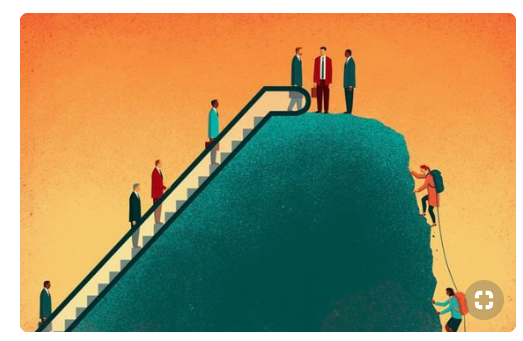
12
Why did you join the Black and White?
Journalism is my first and only language.
What's your favorite scent?
THE CONSTITUTION (smells best in dim lighting)


May 30, 2019
After SMOB candidate Zoe Tishaev outlined her platform in a video March 21, both male and female students were quick to remark that she “didn’t know what she was talking about,” “had good ideas but an annoying voice” and “wasn’t likable but said good things.”
Tishaev lost to John F. Kennedy High School junior Nate Tinbite, who got 74 percent of the vote. The results and Whitman students’ reactions to Tishaev are indicative of a larger trend: gender disparity in government elections.
In the past 15 years, there have only been two student body presidents at Whitman who identified as female. This pattern isn’t new to Whitman, or to the country as a whole; student governments nationwide are traditionally male-dominated. Until 2014, Ohio State University never had an all-female presidential winning ticket, and Georgetown University didn’t have an all-female executive team until 2012.
Sheryl Freedman, who was the SGA advisor for 10 years, called the trend a “systemic cultural issue” and says people often don’t believe females are as capable of leading. A 2018 Pew Research Center Study found that most Americans believe women are equally as able to lead as men, but that women have to do more to prove themselves to reach leadership positions, especially in politics.
In this year’s election for the Student Government Association Executive Board—the president, vice president and class officers—four male and five female students ran. Every boy who ran won his position, while only one female student earned a position.
“What I’ve noticed with most elections that I’ve ever been a part of, is that boys will come out on top, even if there are either more qualified girls or just a higher quantity of girls,” school president Azraf Khan, who has been in SGA for four years,said. “There’s no other contributing factor to why people vote for other people other than ‘I like them more.’”
But what makes a candidate likeable? According to a 2016 study by Rutgers University, desirable traits for officeholders are consistently associated with masculinity and male candidates. Even when women display leadership qualities, like assertiveness and likeability, they are perceived differently than men; a 2016 article from the Atlantic reported that Hillary Clinton tended to lower her voice over the course of her speech, likely in an attempt to appear more masculine and therefore dominant, but her voice still received criticism from both parties.
In an informal lunchtime survey, one eighth of the boys surveyed said that male candidates appeared more likeable and “could appeal to a wider audience.”
Junior Ellie Block, a presidential candidate in this year’s election, said that she was wary of being humorous or putting her face on posters during her campaign. She said female candidates are often judged for their appearance on posters or labeled “annoying” when when trying to be funny.
“When girls try to be funny it’s seen as ‘oh, they’re being annoying,’ but when guys try to be funny, they’re funny,” Block said. “If I were to go up and give a strong speech, people would say ‘she can’t pull off that persona’ because I’m a girl.”
Other female members of the SGA agreed with Block. They said they have to be cognizant of what they wear when they deliver their speech, how much campaigning they do and what they post on their social media.
Luckily for female candidates, the Leadership class offers an opportunity for students who don’t campaign, or lose their campaigns, to join the SGA: students can interview before the Executive Board to join the class.
Of the 18 girls in next year’s leadership class, 12 interviewed to be in the class and most did so after losing an election; but out of the 11 boys in the class, all but three earned a spot in the class by winning an election.
The SGA students we spoke to also said the trend isn’t reflective of the work and input of female students during the leadership class, since leadership members without titles usually do just as much work as titleholders.
SGA advisers Katherine Young and Anne Chiasson said in wake of the recent election results, they’re focusing on including more girls in higher positions within the leadership class. The two chairs for the biggest events, Homecoming and Charity Month, are both girls.
“The truth is that while the positions are important, really the class works together as a whole,” Young said. “What we’re most concerned about is that we have a diverse group in the class at-large because there’s people that can interviewed into the class that aren’t elected. No voice is stronger than another in the class.”
On a county-wide level, out of the past 20 Student Members of the Board, only five have identified as female, including current SMOB Ananya Tadikonda. The recent female SMOBs terms have been scattered: the terms were an average of around five years apart.
“Implicit bias does exist, and I always wonder when I step my foot into the door what my colleagues, the broader people I work with and my peer constituents see me as because I’m so different than the previous SMOBs being a woman and a person of color,” Tadikonda said. “I really want to show young women that they can see themselves in this role too.”
In colleges, this disparity usually stems from a lack of female candidates according to a 2014 article for Inside Higher Ed. A 2017 Politico study found that women are reportedly less likely to consider running for office, which could contribute to why women only make up 20 percent of Congress, 25 percent of state legislature seats and 12 percent of governorships.
But in high schools, the gender gap in student government has less explicit causes. According to Stanford professor Penelope Eckert, voters often rule out women for having voices they consider annoying. Trends like vocal fry, where a person’s voice drops off at the end of sentences, and uptalk, a rising inflection at the end of sentences, are both more common among women because they often have a greater vocal range, Eckert said in a 2014 interview for Radio on Z.
But very recently, the tides seem to be shifting on the collegiate level. Seventy percent of the top ten universities and 50 percent of the top ten public universities identified by US News currently have female student body presidents.
Still, junior Julia Choppin, who ran for treasurer this year, said that this year’s election results worry her.
“It’s disappointing. You get very discouraged when you feel as if you’ve put as much work, if not more, into something as someone else, but they get whatever it is you’re running for,” Choppin said. “It scares me going into the workforce knowing that guys get paid more and get chosen more for jobs over more qualified women. You’re teaching it in high school with these elections.”
Tadikonda has a more positive outlook on the future of student government elections. During her term as SMOB, Tadikonda established MoCo EmpowHER, a county-wide advocacy organization that provides a platform to encourage female students to enter leadership positions. She hopes this program will pave the way for more diverse representation in student government.
“There are a lot of assumptions made about women in leadership positions who are a powerful strong voice,” Tadikonda said. “I think it’s important to be cognizant of that because we shouldn’t feed into the stereotypes, but rather do our best to defy them. I think that’s a really important distinction between this generation and the previous is that this generation is all about defying those stereotypes.”

Paul Anderson • Jun 4, 2019 at 6:01 pm
“That means that most SGA elections are largely based on which candidates students “like” more, normally putting women at a disadvantage; typically, girls vote for candidates they’re friends with regardless of gender, and boys usually vote for other male candidates. This trend is probably part of the reason I won my freshman year election.” thats quite the generalization, any proof behind this? its not a trend if youre just making this up
Tricia Simons • Jun 4, 2019 at 5:58 pm
“In the past 15 years, there have only been two student body presidents at Whitman who identified as female.” why not just say “In the past 15 years, there have only been two female student body presidents at Whitman.” wordy and dumb